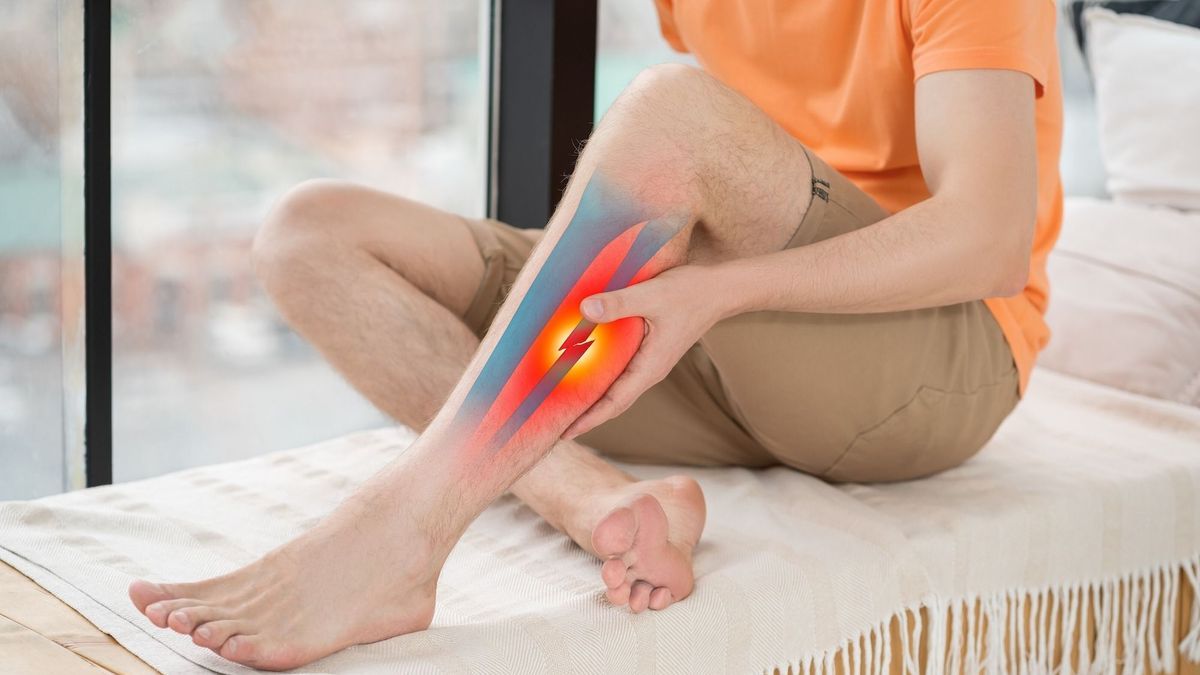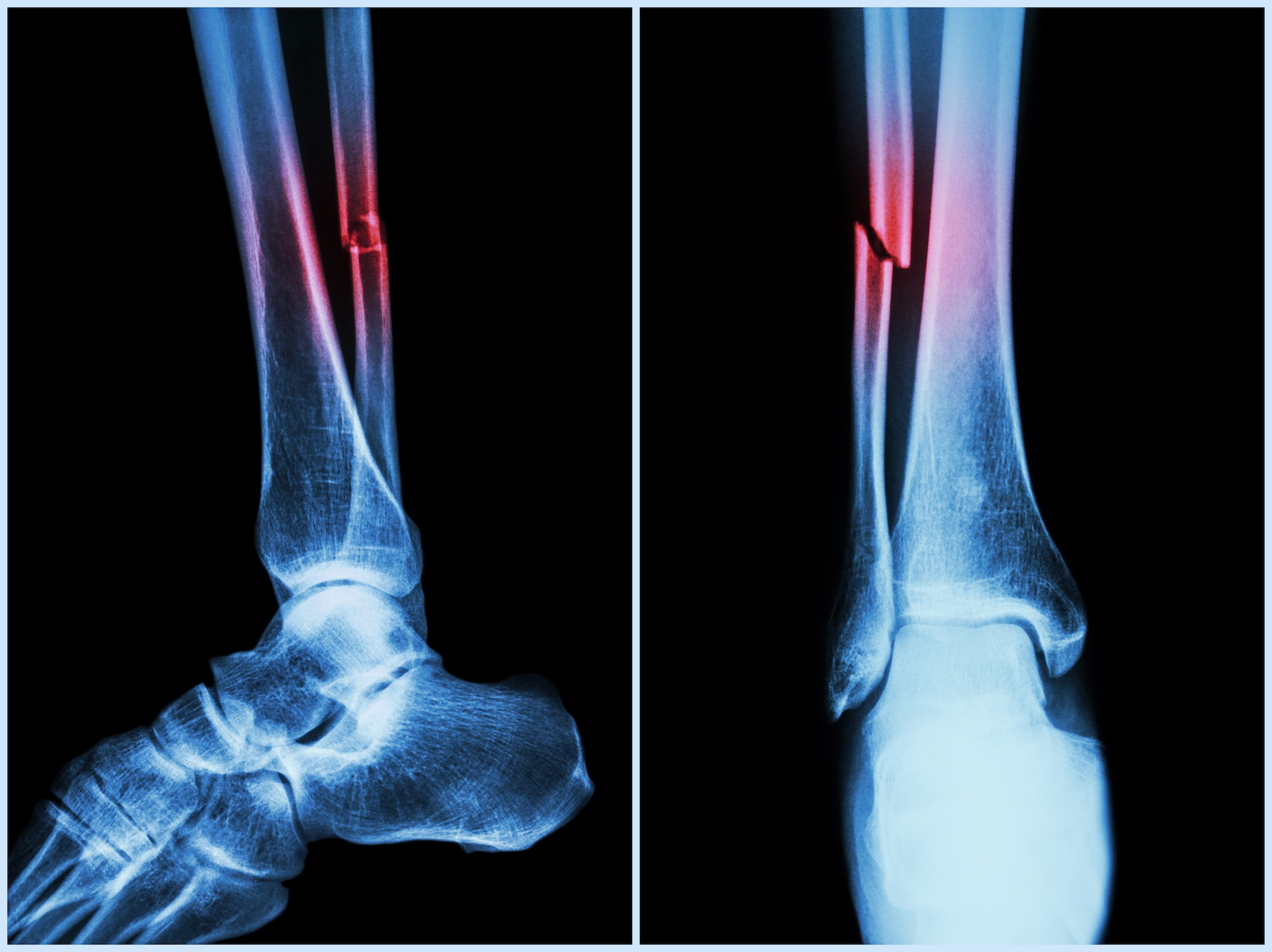
Very common, fibula fracture is an often painful bone injury, which requires emergency treatment in hospital. It generally results from a violent impact or a fall, which explains why it is observed more frequently in athletes or the elderly. To find out the symptoms of fibula fracture, ways to diagnose and treat it, TipsForWomens spoke to Nicolas Bertrand, physiotherapist and osteopath (Paris), author of “The Encyclopedia of Massage” (Ed. Flammarion) .
Most often resulting from a sports-related injury or a road accident, fracture of the fibula (or fibula) is relatively common. Does this injury still require surgery? When will a cast be necessary? Is it systematically accompanied by pain preventing the slightest movement? All the answers to these questions with our expert, Nicolas Bertrand, physiotherapist and osteopath.
What is a fibula fracture?
Also called fibula or fibula, the fibula is a bone located in the posterior and lateral part of the leg, between the ankle and the knee. It is made up of a proximal end which articulates with the tibia, a diaphysis (body of the bone), and a distal end which forms the lateral malleolus. Thinner than the tibia, the fibula is nevertheless essential to the stability of the lower limb, it is the guardian of the lower limb for which it plays the role of shock absorber when walking and to support the ankle.
“Fractures of the fibula are relatively common. They can affect its upper end (near the knee), its lower end (at the level of the external malleolus of the ankle), and its diaphysis, in other words the length of the bone”indicates Nicolas Bertrand.

The different types of fibula fracture
We are talking about simple fibula fracture when the bone is broken in one place; beyond two bone fragments, we speak of fracture comminutive.
Furthermore, a fibula fracture is said to be displaced when the bone fragments are not aligned. “THE displaced fractures are generally more serious than non-displaced fractures and require longer support because they are more complex”.
As to open fractures of the fibula, they designate bone fractures which have caused a wound. This is again a serious factor due to the infectious risk linked to the penetration of germs into the wound, we can read on the Health Insurance website*.
Causes of a fibula fracture
THE trauma are the main cause of fibula fracture. They can be direct such as during a road accident, a fall (on a bicycle or ski for example) or impact with a heavy object on the leg, or indirect in the event of twisting of the leg while the foot remains blocked in its axis. Another cause, the aging. “By increasing the risk of falling,advanced ageoften associated with a vitamin D deficiency and to a greater sedentary lifestyleexposes to a greater risk of fibula fracture”. More rarely, the fibula can undergo damage stress or fatigue fractureslinked to intense and repetitive efforts, particularly among high-level athletes.
What are the symptoms of a fibula fracture?
And at pain is the main symptom of a fibula fracture, its intensity varies depending on the location of the fracture, indicates the physiotherapist. “A fractured fibula can be very painful. But when it occurs in the upper part of the fibula, the pain is not necessarily very severe, except on palpation.. It is usually difficult or impossible for patients to support themselves on the affected leg, making any movement complicated. A deformation of the leg can appear when the fracture is located at the level of the diaphysis of the fibula. Finally, it is not uncommon for bruises develop around the fractured area due to the accumulation of blood caused by the injury.
How to diagnose a fibula fracture?
The diagnosis of a fibula fracture is based on questioning the patient to find out the circumstances of the fracture, the extent of the trauma and the intensity of the pain. The doctor then carries out a clinical examination of the leg looking for a wound, a hematoma, an abnormal pulse at the ankle and foot which would indicate damage to the arteries, and a mobility disorder in the toes, indicative of damage to the nerves in the leg. “In my practice, I very often use tuning forkindicates Nicolas Bertrand. If placing this vibrating object on a bony relief causes pain, this requires additional research to look for a fracture of one or more bones in this region; the diagnosis must be confirmed or refuted by a suitable imaging examination, generally a x-ray”. This imaging examination also makes it possible to specify the number of bone fragments, to locate them precisely and to determine whether they are aligned or not.
Treatment of a fibula fracture
Treatment of a fibula fracture is based on orthopedic treatment which consists of putting the two fragments of the broken bone back into continuity. Carried out under loco-regional or general anesthesia, this treatment, called reduction, is performed only for closed fractures and does not require surgical intervention, only external maneuvers. “Reducing a fibula fracture involves pulling on the joint to align the bones before immobilizing the leg.”specifies Nicolas Bertrand. Immobilization is carried out using a splint, a cast boot or resin. Its duration depends on the location of the fracture on the fibula, adds the physiotherapist. “Between 6 and 8 weeks are necessary to ensure good bone consolidation when the fracture is located near the ankle, 8 to 12 weeks when it is located near the knee..
In the event of an open fracture of the fibula, conservative treatment is not enough; A surgical treatment is necessary, if possible within 3 to 6 hours following the trauma in order to limit the risk of infection. The operation, carried out by an orthopedic surgeon, most often consists of inserting a metal rod in the center of the bone, along its entire length, we can read on the Health Insurance website. In more complex situations, the practitioner may immobilize the fracture using screws, metal plates, or other external fixation devices.
Depending on the nature and extent of the fracture, the patient may be allowed to support himself on his leg or, on the contrary, instructed not to put his foot on the ground. He must also wait for the surgeon to give the green light to begin the procedure. rehabilitation by physiotherapy. “The objectives of rehabilitation are to allow the patient to recover joint range of motion, muscular strength and to prevent venous complications (thromboses) by promoting drainage. It may include muscle strengthening exercises such as ankle or knee flexions and extensions, squats, glute exercises, as well as back and forth exercises. proprioception intended to rebalance the patient. Walking, with or without crutches, is strongly recommended: this physical activity helps to reduce edema if necessary, to restore the strength and mobility of the leg, and to activate blood circulation to prevent the risk of thrombosis.
“The fracture of the fibula generally heals very well and does not expose the injured to fragility which could encourage recurrences”assures Nicolas Bertrand.
